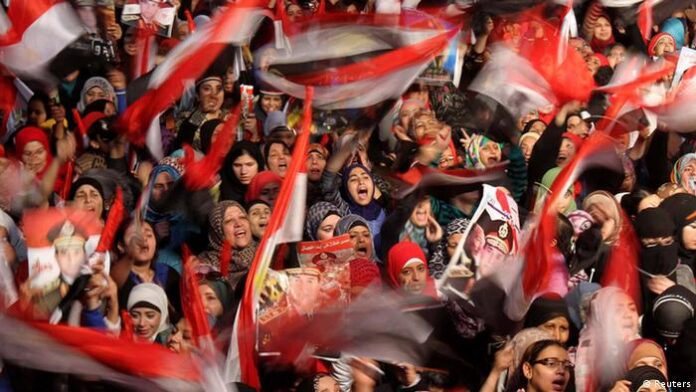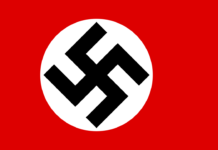Introduction
In late December 2010, Tunisia was in a state of turmoil. Streets were filled with people raising their anger against the government which had been in place for more than two decades. In the subsequent months, the whole world watched as the Arab world went into chaos. Slogans were raised, wars broke out and regimes were toppled in what came to be known as the Arab Spring.
The Spark
The Arab speaking countries were characterised by autocratic rulers who regularly violated their citizens’ rights to ensure political stability. Use of violence and suspending rights like freedom of press were routine tools used by these governments to stay in power.
The countries were also facing many economic hardships. At that time, the youth-population ratio (percentage of youth in total population) in Arab countries was amongst the highest in the world. However, the governments could not provide sufficient jobs in the public sector. On the other hand, the private sector remained inadequate due to lack of investment. This resulted in massive unemployment among the youth.
At the same time, the countries were suffering from very high inflation. The Arab countries imported most of their food, and the food crisis of 2007-08 added up to their woes.
The governments were also chronically corrupt and wealth was concentrated among a small circle of elites closest to the rulers. The rulers had been in power for decades, filling up their coffers as the public struggled to survive.
All these factors combined to create a public frustrated with their current regimes and demanding a change. The people had had enough of the rulers who could do nothing to lessen their burden but instead only added on to it.
Tunisia… Where it all started
Mohammed Bouzazi, a Tunisian street-vendor and sole bread-winner of a family of 8, was beaten and publicly harassed by the police for not having a permit to sell certain goods. He tried raising his voice against the injustice but it only fell on deaf ears. As a sign of protest, he put himself to fire in front of the government office. And soon, the fire spread to the whole Arab world.
People documented and shared Bouzazi’s act of protest. Public anger at the autocratic regime soon turned into large scale movements. The government tried to supress the protestors by use of force but to no avail. After a month of uprisings by the people, Ben Ali, the then President of Tunisia, finally stepped down as the ruler and fled the country. A democracy came into force in Tunisia in December 2011.
The self-immolation of the street-vendor, the videos shared of the act, meant that the public could see and relate with the plight of Mohammed Bouzazi. The cry that rose from among them was one that demanded freedom, self-respect and dignity.
The Movement
The success of the revolt in Tunisia inspired the people of the neighbouring countries to stand up against their oppressive rulers.
Protests sprung up in Egypt only a few days after Ben Ali was removed from power. The government offered concessions to the public to stem the revolution but failed. So it decided to use military force. But tables turned when the Military refused to side with the government and instead supported the protestors, resulting in the stepping down of President Hosni Mubarak in February 2011, after nearly 50 years in power.
President Ali Abdullah Saleh of Yemen was caught in a bomb attack by the protestors and fled the country in June 2011. The protestors, aided by influential military leaders, succeeded in overthrowing the government and Mansur Hadi was elected as the President in the elections held in February 2012.
The protests in Bahrain were brutally suppressed by the government, aided by military support from Saudi Arabia and the United Arab Emirates. The movement was stifled and protestors convicted for acting against the regime.
Syria and Libya got divided into multiple factions which resulted in civil war in both the countries.
Result of The Movement
The Arab Spring revolution was the first mass movement catalysed by Social Media. The protests were coordinated through platforms like Facebook. It also served as a means of communicating information. The rapid success and spread of the movement is credited to Social Media.
The movement initially aimed at achieving transition to democracy through peaceful protests, as in Tunisia and Egypt. However, as the movement spread in different countries, it took on violent shades.
The outcomes of the revolution have been mixed. While some countries like Tunisia and Egypt overturned their governments, people faced grave repercussions in Bahrain. Civil wars broke out in Syria and Libya. Some countries like Jordan, Morocco and Saudi Arabia extended social freedom and rights to their citizens.
The movements failed to achieve major change on the economic standing. In fact, in the years following the revolts, most of the economies have gotten worse. Solutions to economic challenges require large investments in education and private sectors. The governments could not commit wholly to these measures due to political instability prevailing in the region.
Conclusion
The Arab Spring represented the desire for change and demonstrated the strength of popular movements. It showed that the rulers cannot turn a blind eye to the needs of their people. Acting in the interests of the public is in the long term interest of the regime.
By Pranav Alok Garg
Write and Win: Participate in Creative writing Contest & International Essay Contest and win fabulous prizes.















